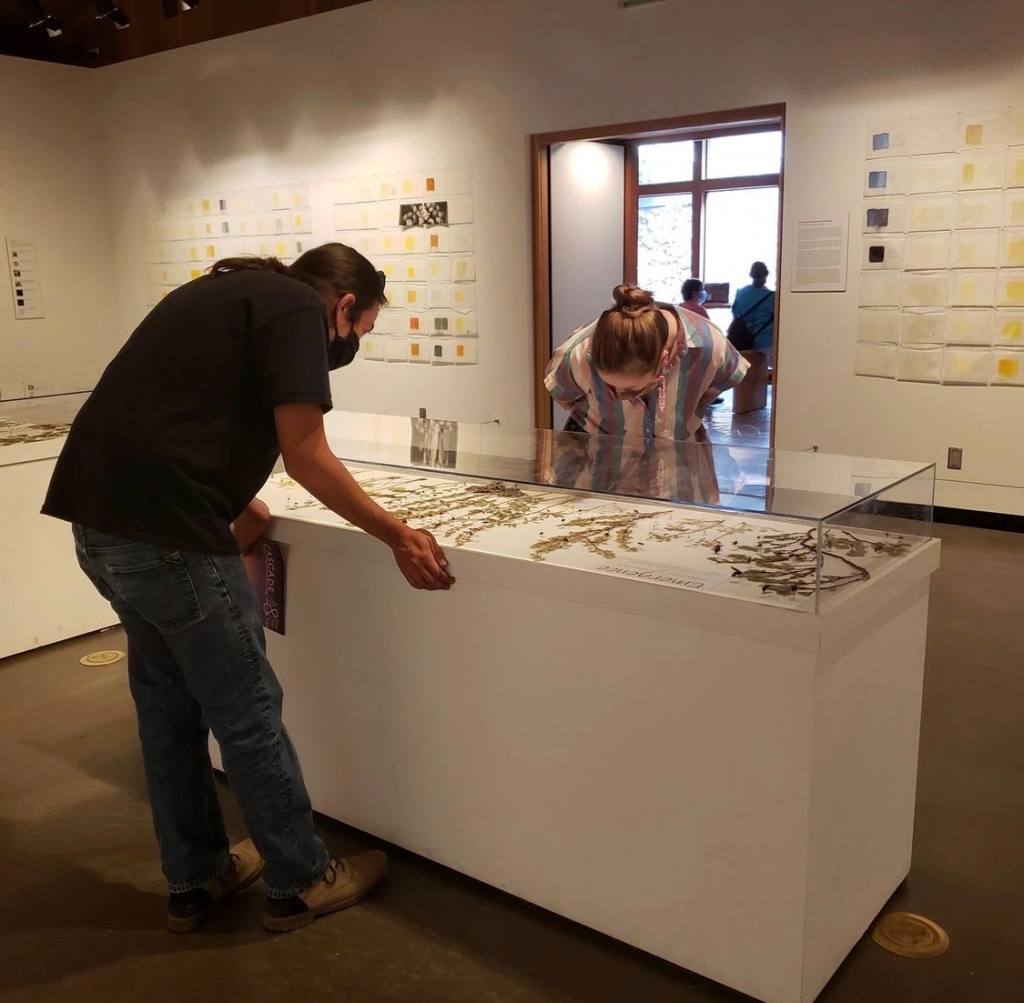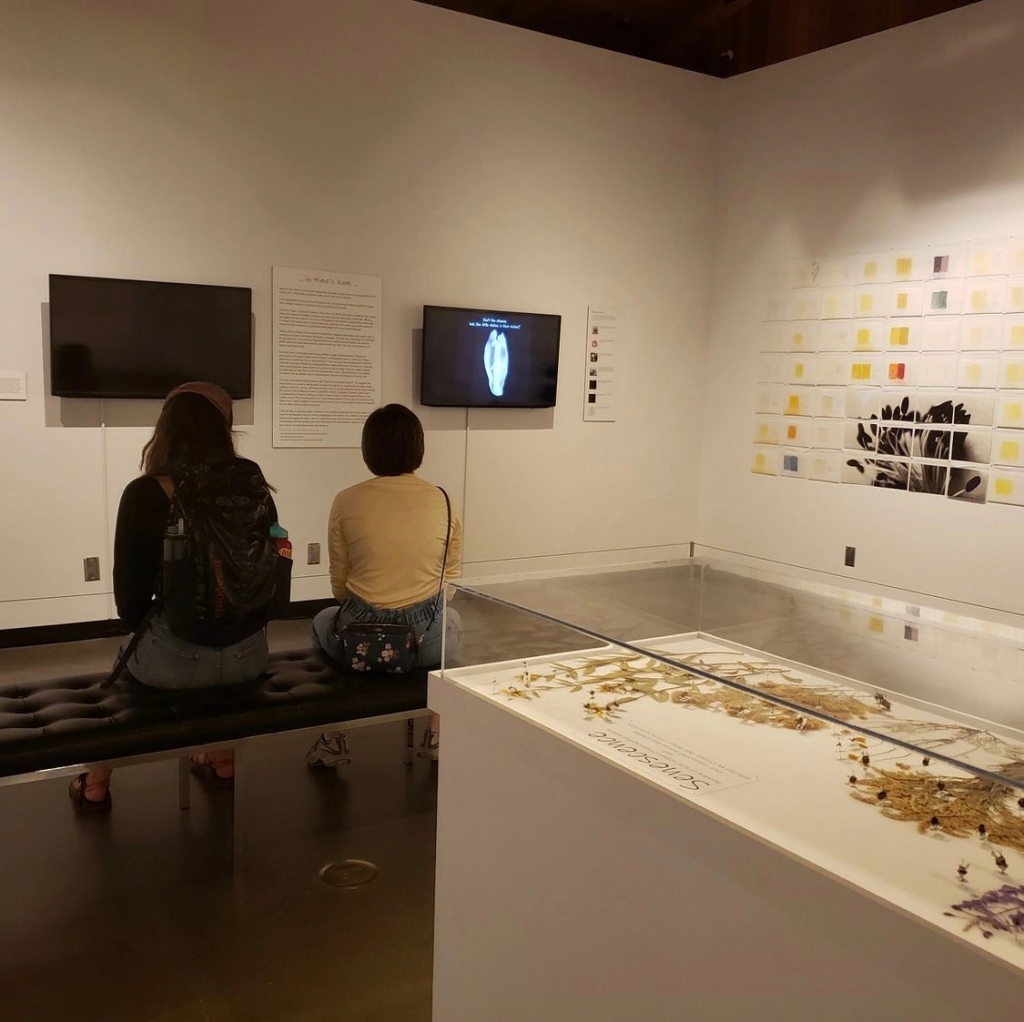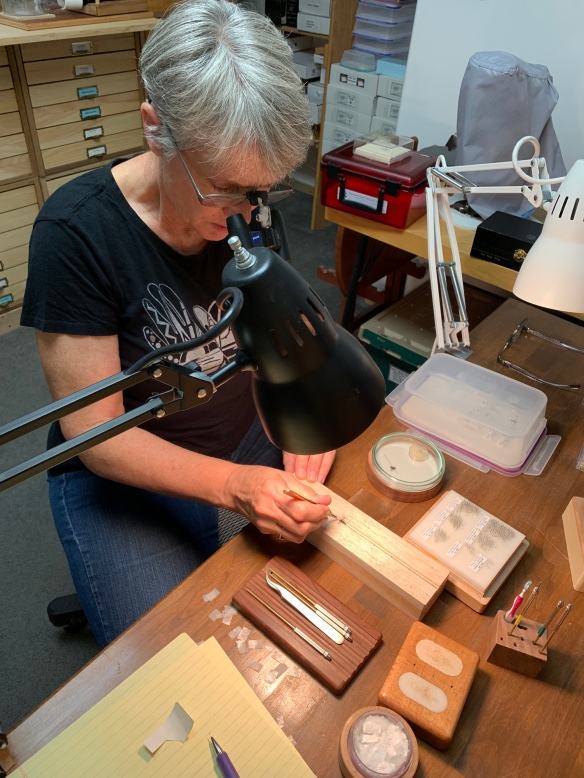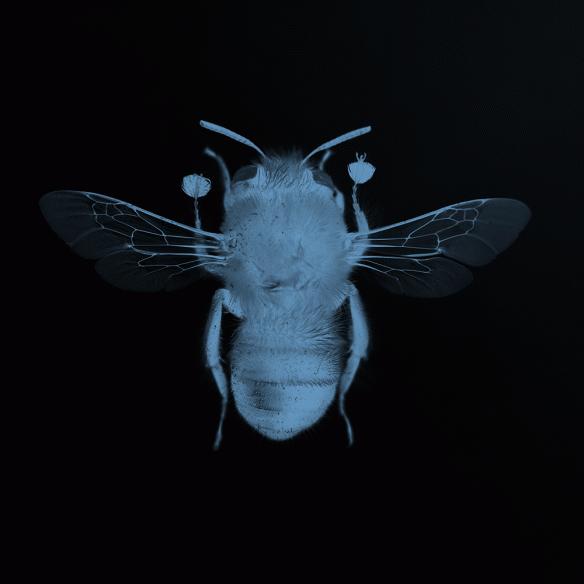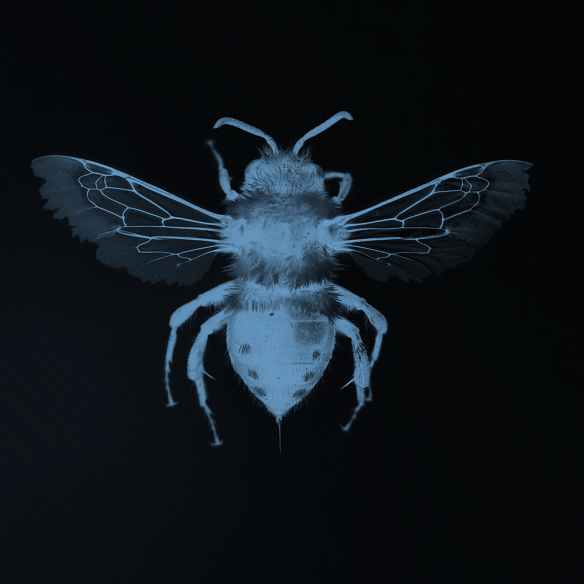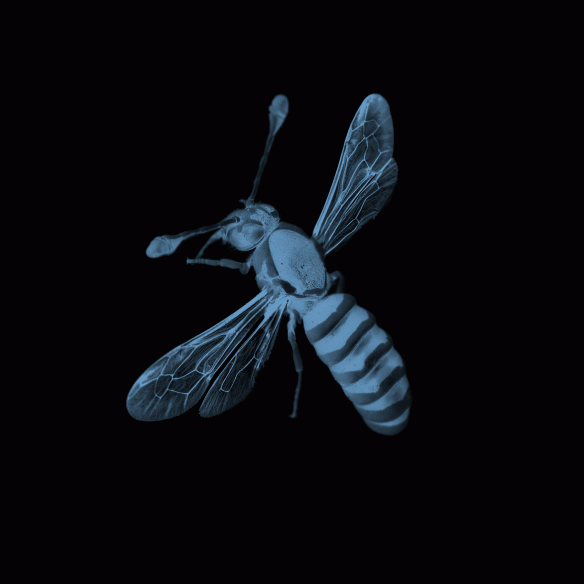I haven’t added anything to my site since he exhibition at the High Desert Museum in Bend, Oregon, so I thought I would start with some spring wildflowers from the native Garry Oak Meadows from my neck of the woods.
The first image is a small bouquet of Camassia leichtlinii, (Great Camas), Lomatium utriculatum (Spring Gold), and Plectritis congesta (Sea Blush). These are merely 3 of the many wildflowers to be found in a Garry Oak meadow. Beautiful wildflowers much visited by a diversity of pollinators.

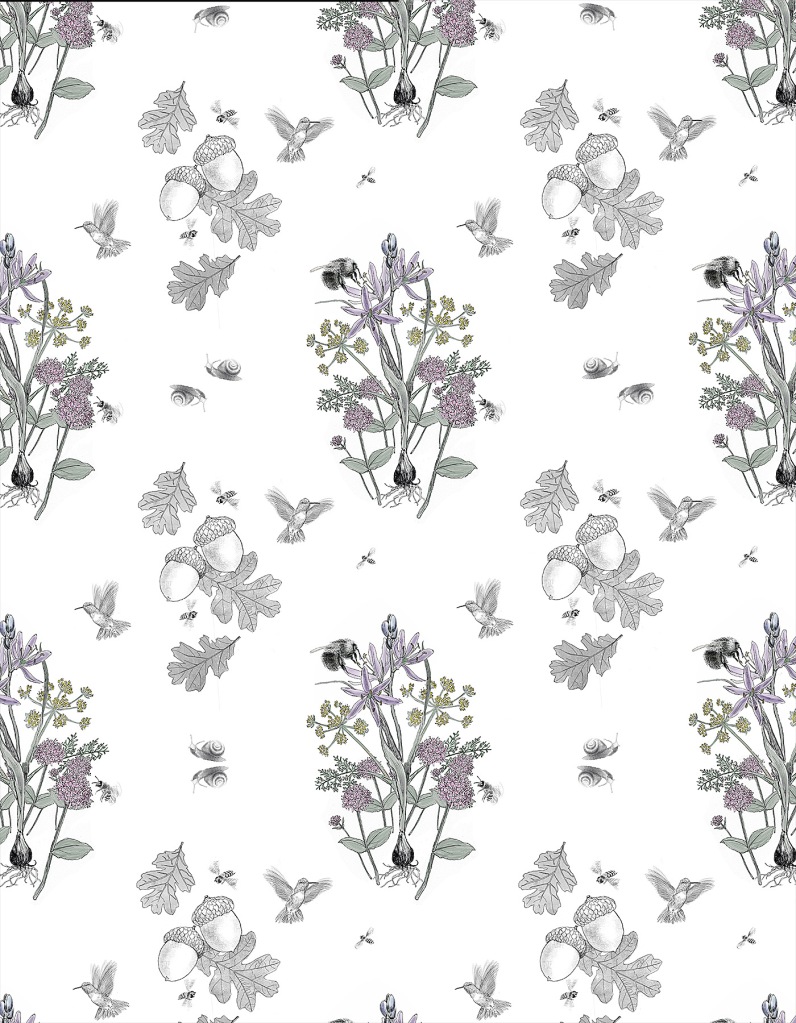
Thought I’d create a repeat wallpaper design from the flowers, and add to them the iconic and rare Garry Oak environment, suggested here by the acorns and leaves.
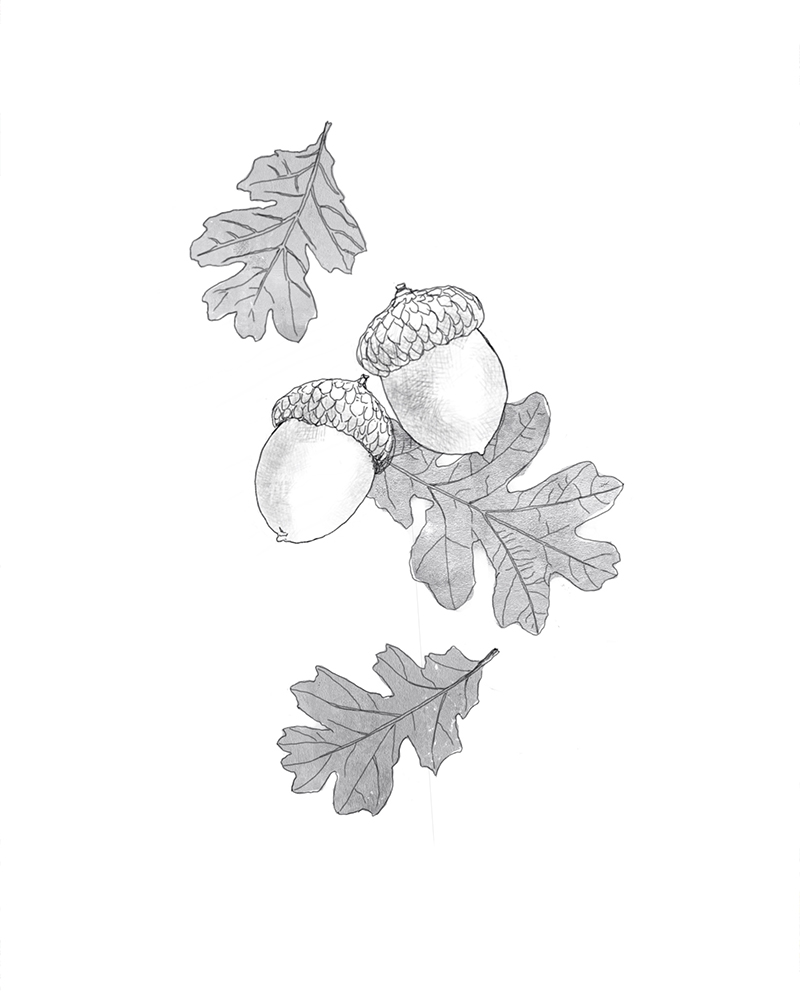
Not too long ago, I attended a wonderful and informative walk and talk at the UBC Botanical Gardens. The talk was given by the curator of the Westcoast native gardens, Ben Stormes. Ben is creating research Garry Oak Meadow so it is a work in progress, but nontheless, it is beautiful and I learned a great deal about this rare environment, which, like all things in nature, is shrinking because of habitat loss, development, pesticides, etc. A story we know all too well. I’m not going to end on a negative note because there are organizations, like the one on Vancouver Island, the Garry Oak Ecosystem Recovery Teams, which are restoring these beautiful native habitats.



